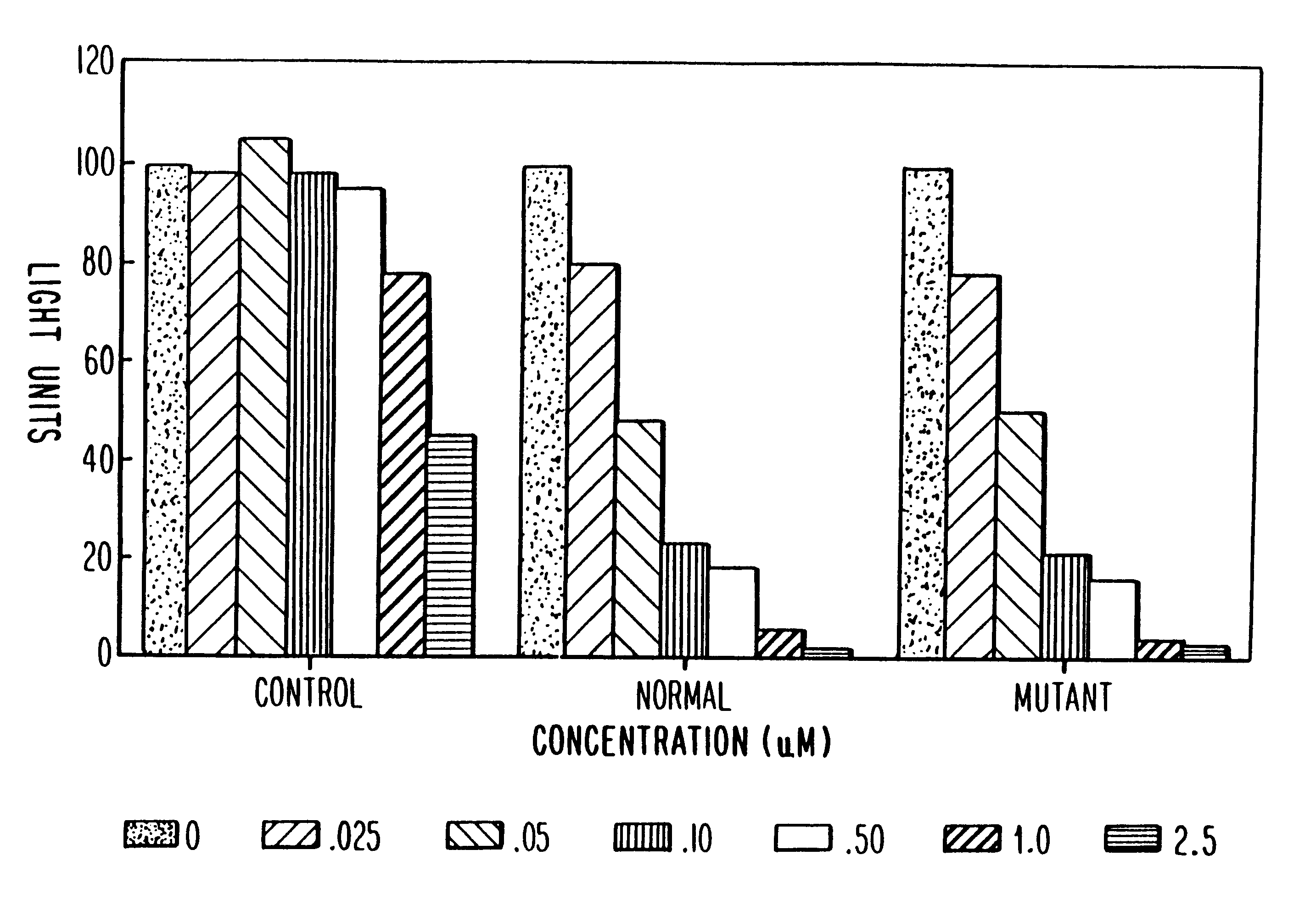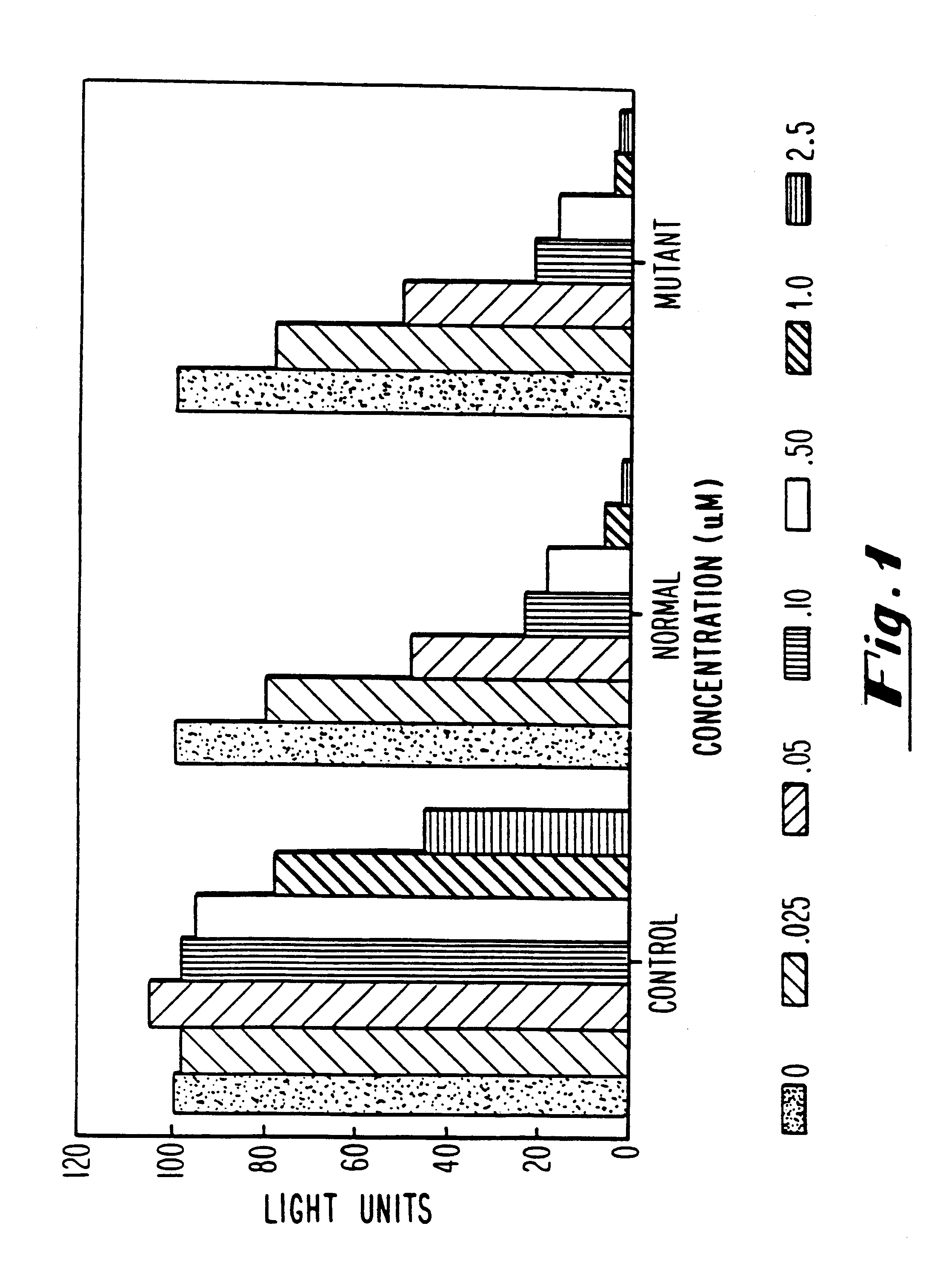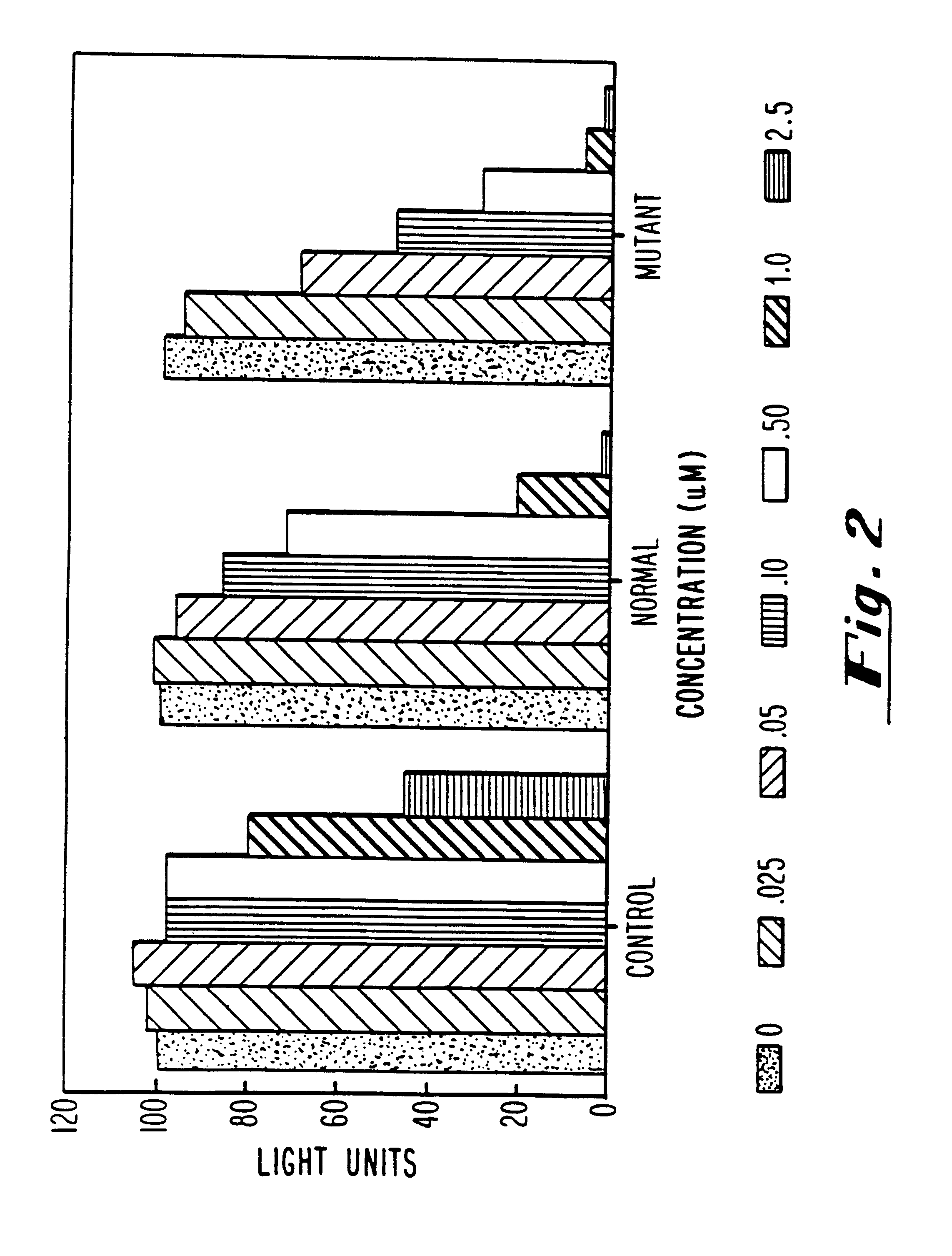Antisense inhibition of ras gene with chimeric and alternating oligonucleotides
a technology of oligonucleotide and antisense, which is applied in the direction of biocide, drug composition, genetic material ingredients, etc., can solve the problems of nuclease degradation, inability to cleave efficiently using mammalian rnase h, and inability to detect antisense activity in cells,
- Summary
- Abstract
- Description
- Claims
- Application Information
AI Technical Summary
Benefits of technology
Problems solved by technology
Method used
Image
Examples
example 1
Oligonucleotide Synthesis
Substituted and unsubstituted deoxyoligonucleotides were synthesized on an automated DNA synthesizer (Applied Biosystems model 380B) using standard phosphoramidate chemistry with oxidation by iodine. For phosphorothioate oligonucleotides, the standard oxidation bottle was replaced by 0.2 M solution of 3H-1,2-benzodithiole-3-one 1,1-dioxide in acetonitrile for the stepwise thiation of the phosphite linkages. The thiation wait step was increased to 68 sec and was followed by the capping step. After cleavage from the CPG column and deblocking in concentrated ammonium hydroxide at 55.degree. C. (18 hr), the oligonucleotides were purified by precipitation twice out of 0.5 M NaCl solution with 2.5 volumes ethanol. Analytical gel electrophoresis was accomplished in 20% acrylamide, 8 M urea, 454 mM Tris-borate buffer, pH=7.0. Oligonucleotides were judged from polyacrylamide gel electrophoresis to be greater than 80% full-length material.
Oligoribonucleotides were syn...
example 2
ras-Luciferase Reporter Gene Assembly
The ras-luciferase reporter genes described in this study were assembled using PCR technology. Oligonucleotide primers were synthesized for use as primers for PCR cloning of the 5'-regions of exon 1 of both the mutant (codon 12) and non-mutant (wild-type) human H-ras genes. The plasmids pT24-C3, containing the c-H-ras1 activated oncogene (codon 12, GGC.fwdarw.GTC), and pbc-N1, containing the c-H-ras proto-oncogene, were obtained from the American Type Culture Collection (Bethesda, Md.). The plasmid pT3 / T7 luc, containing the 1.9 kb firefly luciferase gene, was obtained from Clontech Laboratories (Palo Alto, Calif.). The oligonucleotide PCR primers were used in standard PCR reactions using mutant and non-mutant H-ras genes as templates. These primers produce a DNA product of 145 base pairs corresponding to sequences -53 to +65 (relative to the translational initiation site) of normal and mutant H-ras, flanked by NheI and HindIII restriction endonu...
example 3
Transfection of Cells with Plasmid DNA
Transfections were performed as described by Greenberg, M. E., in Current Protocols in Molecular Biology, (F. M. Ausubel, R. Brent, R. E. Kingston, D. D. Moore, J. A. Smith, J. G. Seidman and K. Strahl, eds.), John Wiley and Sons, NY, with the following modifications. HeLa cells were plated on 60 mm dishes at 5.times.10.sup.5 cells / dish. A total of 10 .mu.g or 12 .mu.g of DNA was added to each dish, of which 1 .mu.g was a vector expressing the rat glucocorticoid receptor under control of the constitutive Rous sarcoma virus (RSV) promoter and the remainder was ras-luciferase reporter plasmid. Calcium phosphate-DNA coprecipitates were removed after 16-20 hours by washing with Tris-buffered saline [50 Mm Tris-Cl (pH 7.5), 150 mM NaCl] containing 3 mM EGTA. Fresh medium supplemented with 10% fetal bovine serum was then added to the cells. At this time, cells were pre-treated with antisense oligonucleotides prior to activation of reporter gene expres...
PUM
| Property | Measurement | Unit |
|---|---|---|
| Temperature | aaaaa | aaaaa |
| Temperature | aaaaa | aaaaa |
| Temperature | aaaaa | aaaaa |
Abstract
Description
Claims
Application Information
 Login to View More
Login to View More - R&D
- Intellectual Property
- Life Sciences
- Materials
- Tech Scout
- Unparalleled Data Quality
- Higher Quality Content
- 60% Fewer Hallucinations
Browse by: Latest US Patents, China's latest patents, Technical Efficacy Thesaurus, Application Domain, Technology Topic, Popular Technical Reports.
© 2025 PatSnap. All rights reserved.Legal|Privacy policy|Modern Slavery Act Transparency Statement|Sitemap|About US| Contact US: help@patsnap.com



